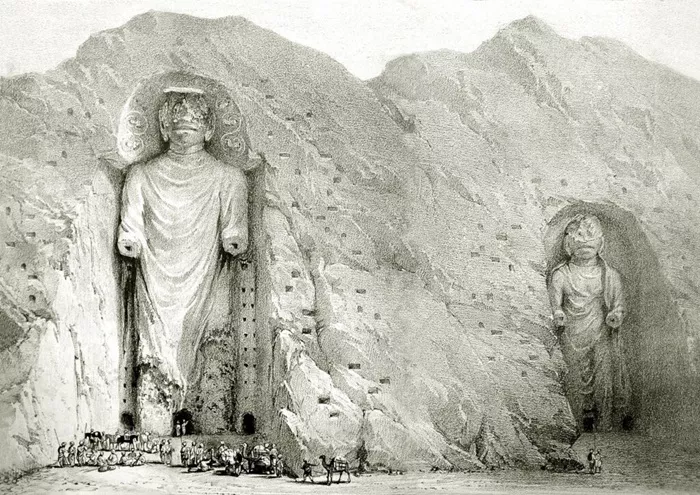The Buddha is one of the most important figures in human history. Many people around the world respect and follow his teachings. Statues of the Buddha help remind people of his wisdom, kindness, and path to enlightenment. But when was the first Buddha statue made? This question is very interesting for those who want to learn about Buddhism and its history.
Early Buddhist Art: Before Buddha Statues
At the beginning, Buddhists did not make statues of the Buddha. Instead, they used symbols to show his presence. These symbols include the bodhi tree, footprints, an empty throne, and the Dharma wheel. This period is called the “aniconic phase” of Buddhist art. It lasted for about three centuries after the Buddha’s death.
The reason for this was respect. Early Buddhists thought it was wrong to make images of a living person. They wanted to focus on his teachings, not his physical form. So, Buddha was shown through signs, not statues.
The Birth of Buddha Statues
The first Buddha statues appeared around the 1st century BCE to the 1st century CE. This happened mainly in two places: Gandhara (modern-day Pakistan and Afghanistan) and Mathura (in India). These regions had strong artistic traditions and contact with other cultures.
The Gandhara School
The Gandhara region was influenced by Greek and Roman art, due to Alexander the Great’s earlier conquests. This mix of styles helped create the first lifelike Buddha statues. The statues from Gandhara show the Buddha with detailed robes, curly hair, and a calm face. These statues look quite different from earlier symbolic art.
The Mathura School
At the same time, the Mathura school in India also began making Buddha statues. The style here was more Indian, with rounder faces and simpler robes. The Buddha is often shown sitting or standing with a peaceful smile. This style influenced many later Buddhist statues across Asia.
Why Did Buddha Statues Appear?
The change from symbols to statues happened for many reasons:
- Spread of Buddhism: As Buddhism spread to new areas, people wanted more personal ways to connect with the Buddha.
- Devotion: Statues helped people show respect and devotion more clearly.
- Art and Culture: Different cultures had their own ways of showing religious figures, and statues fit into that tradition.
Types of Buddha Statues
Since the first Buddha statues were made, many different types have appeared. Each type shows different meanings and stories from Buddha’s life.
Common Poses of Buddha Statues
Buddha statues come in many poses, called mudras, which have special meanings. Some common poses include:
- Meditation Pose (Dhyana Mudra): The Buddha sits cross-legged with hands resting in his lap, symbolizing meditation and inner peace.
- Teaching Pose (Dharmachakra Mudra): The Buddha’s hands make a circle, representing the turning of the wheel of Dharma or teaching.
- Protection Pose (Abhaya Mudra): The right hand is raised with palm facing outward, meaning fearlessness and protection.
Materials Used
Early Buddha statues were made from different materials like stone, bronze, and clay. The choice of material often depended on local resources and traditions. For example, Gandhara statues were often made from grey schist stone, while Mathura statues were usually red sandstone.
Where Are the Oldest Buddha Statues Now?
Many of the earliest Buddha statues have survived in museums and religious sites. Some famous museums in the world hold important Gandhara and Mathura statues. Visiting these places gives a chance to see how ancient artists created the first Buddha images.
Why Understanding the First Buddha Statue Matters
Knowing when and where the first Buddha statue was made helps us understand how Buddhist art and culture evolved. It also shows how Buddhism adapted to different societies and their artistic traditions.
For those interested in the buddha statues types, this history gives a foundation to appreciate the deep meanings behind every statue.
Conclusion
About two thousand years ago, the first Buddha statue appeared in Gandhara and Magadha. Before that, Buddhists did not carve Buddha statues directly, but used symbolic symbols to express the existence of Buddha. With the spread of Buddhism and cultural exchanges, Buddha statues became an important way to express faith and respect.
Understanding the origin of the first Buddha statue helps us better understand the development of Buddhist art and the diversity of Buddhist culture. Today, Buddha statues are not only a symbol of Buddhist faith, but also inspire countless people to pursue inner peace and enlightenment.

